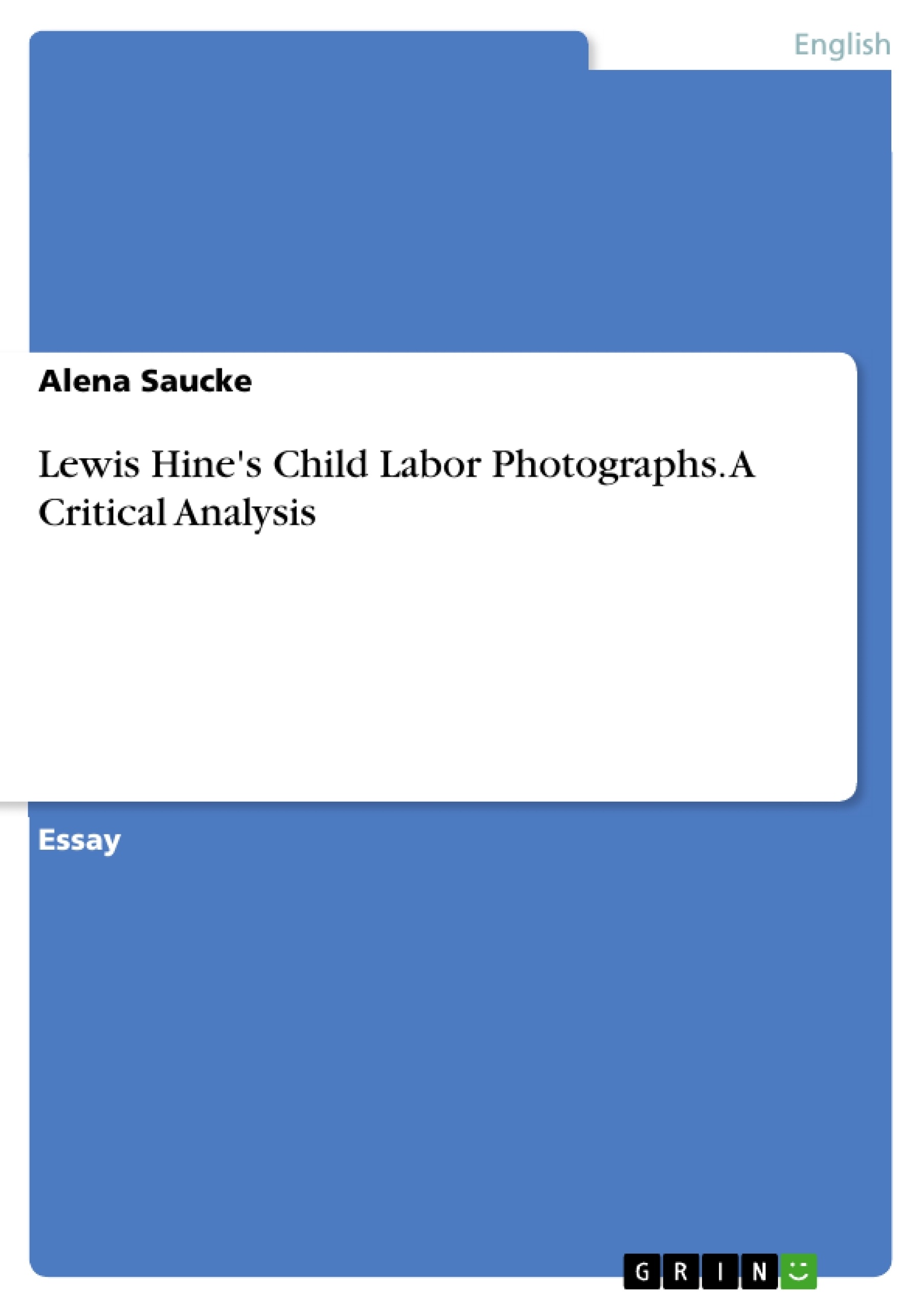Much like the polarizing discussions around finding and displaying truth in photographic meaning, social documentarian Lewis Hine’s child labor photographs have attracted their share of heterogeneous interpretations. While his original intention of pursuing social change and having his photographic work act as a “lever for social uplift” (Hine, 111) is not denied altogether, some scholars have questioned this work as actually supportive to an ideology reproducing the class system that it set out to alter.This essay looks at a multitude of perspectives on Hine’s work, specifically focusing on one representative image of his work for the National Child Labor Committee during the Progressive Era, comparing the author's own analysis with interpretations of Alan Trachtenberg, Maren Stange and James Guimond among others to reassess questions of aesthetic and moral value in a representative photograph of the NCLC period.
Table of Contents
- Lewis Hine's Child Labor Photographs: A Critical Analysis
- A Multiplicity of Perspectives
- The Aesthetic and Moral Value of Hine's Work
- The Impact of Hine's Vision
- Analysis of a Representative Image
Objectives and Key Themes
This essay aims to provide a critical analysis of Lewis Hine's child labor photographs, particularly focusing on his work for the National Child Labor Committee during the Progressive Era. It examines various interpretations of Hine's work, exploring its aesthetic and moral value through a comparative analysis of different scholarly perspectives.
- The role of social photography in promoting social change
- The influence of government institutions on the production and interpretation of documentary photography
- The power of aesthetics and composition in conveying social issues
- The complexities of interpreting historical photographs and their changing meaning over time
- The ethical considerations involved in depicting child labor and the potential for exploitation
Chapter Summaries
- The essay begins by introducing the controversy surrounding Lewis Hine's child labor photographs, exploring differing interpretations of his work and its potential for social change.
- It delves into the criticisms of social photography by scholars like Maren Stange and John Tagg, examining their arguments about its role in reinforcing social inequalities.
- The essay explores the concept of photographic meaning as fluid and influenced by cultural context, drawing on the work of Allan Sekula and Peter Seixas.
- It analyzes the changing nature of Hine's work over time, considering the shifting economic and political forces that influenced his photographic practice.
- The essay examines Hine's artistic approach, highlighting his rejection of purely aesthetic concerns and his commitment to social reform through photography.
Keywords
The essay explores key themes such as social photography, child labor, documentary photography, aesthetics, ethics, social change, and the interpretation of historical photographs. It examines the work of influential scholars like Maren Stange, John Tagg, Allan Sekula, and Peter Seixas, and analyzes the impact of Lewis Hine's photographic work on the public consciousness.
- Quote paper
- Alena Saucke (Author), 2014, Lewis Hine's Child Labor Photographs. A Critical Analysis, Munich, GRIN Verlag, https://www.grin.com/document/307275




